
Strict vs. Kipping Pull Ups: The Final Debate
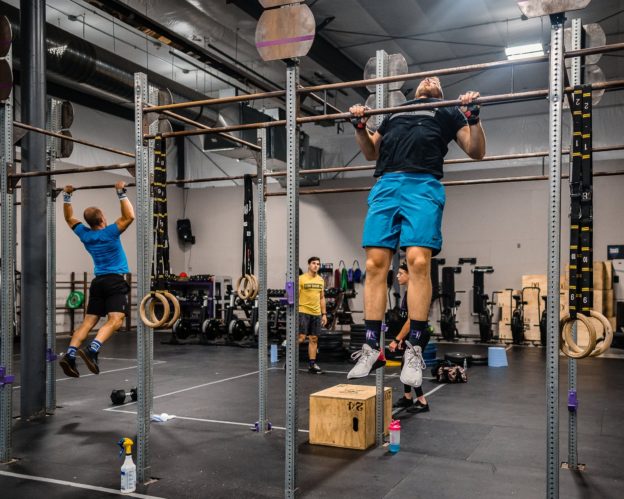
If you’ve spent more than 8 or 10 seconds scrolling through comments on videos where athletes are performing any style of kipping pull ups, you’ve undoubtedly come across comments like: “kipping is cheating!”, or “those aren’t real pull ups!”, or a personal favorite: “let’s see how many real pull ups they can do” (because it’s not unlikely that the subject of the video could perform more strict pull ups than you think). Well-intentioned defenders of the realm will then interject, explaining why one might choose a kipping pull up instead of a strict pull up, but by then it’s too late – the internet trolls have moved on. So where does that leave us? It leaves us with the need for a thorough explanation of the differences between the two movements, and how/when to apply their respective uses correctly. If you’re looking for a definitive victor, I’ll save you some reading: the superior pull up variation depends on the application and desired outcome. You would probably agree that a pick-up truck is superior to a sedan for hauling plywood and lumber, and would also agree that a sedan is superior to a pick-up truck in fuel efficiency for a cross country trip. You would agree with those statements because you understand that some things are designed to be used in specific situations or provide a solution to a problem. Pull ups are no different; CrossFit has just provided us with the eco-friendly sedan for our cross country fitness voyage in the form of a kipping pull up. Let’s roll.
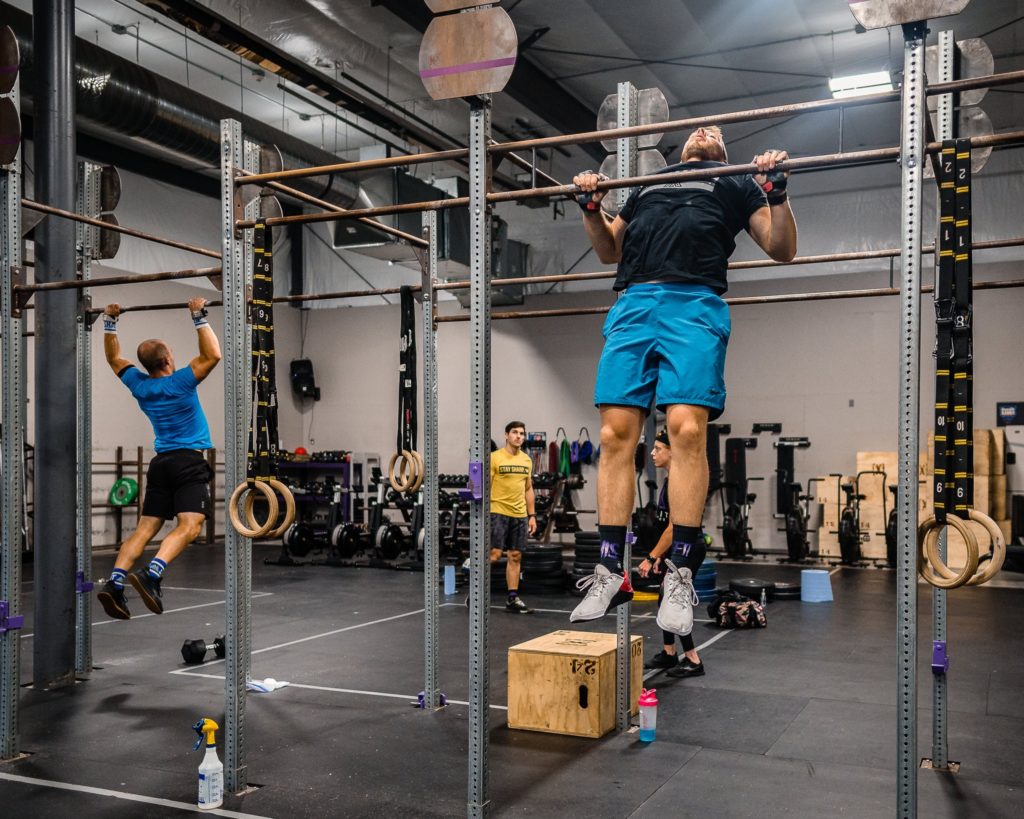
Strict Pull Ups
Odds are, you were doing strict pull ups before you were doing or even knew about kipping pull ups. In general, strict pull ups are incredible for developing upper body strength, stamina, power, grip strength, healthy shoulders, back musculature, and general athleticism. They’re functional, scalable, and beneficial to you as a member of the human species. You can likely find individuals who can squeak out a few decent push ups, but it doesn’t mean they can pull their chin over a pull up bar. Assuming a standard of a full dead-hang (elbows fully extended at the bottom and chin over the top of the bar at the top), there’s no skirting the strength requirement to make that range of motion happen. Let’s also not overlook the baseline capability of supporting your own body weight while suspended only by the strength of your grip, another terrific measure of physical capacity. They provide a necessary avenue to balance out commonly overused anterior shoulder/chest musculature, which is most often seen in more traditional bodybuilding-type gym-goers. Underdeveloped back musculature can result in a semi-permanent forward rotation of the shoulders since the posterior muscles in the upper body aren’t strong enough to keep the shoulder girdle pulled back into a neutral position, or keep larger muscles like the pectorals from becoming short and tight due to over training relative to the back. We often see athletes with underdeveloped pulling musculature frequently experience shoulder pain and poor upper body range of motion because they simply don’t use the muscles needed to support the back side of the shoulder joint.
Finally, strict pull ups are infinitely scalable. For those un-indoctrinated in CrossFit terminology, all this means is that with appropriate scaling we can get anyone, regardless of their fitness level, doing a “strict pull up” or comparable pulling variant. Let’s take an extreme example: a de-conditioned individual who weighs 400 pounds. While we’re probably not getting this athlete on a pull up bar unsupported, we can likely get them to hold onto a pair of rings that are suspended at their chest height, lean back so that their torso is reclined slightly past vertical with straight arms, and then have them pull what would be a fraction of their body weight up to the rings; or a ring row. If we can do that, then we can meet anyone else in the middle and get them stronger and fitter. Band-assisted strict pull ups are the next easiest way to scale the strict pull up, and are essentially “percentage work” for your pull ups in the same way you would do percentage work for your barbell lifts. Even athletes who can perform massive sets of strict pull ups can benefit from the use of a band for speed work since they enable athletes to perform more reps and faster reps than they could otherwise do with their body weight alone. They also provide athletes with an easy avenue to progress to unassisted pull ups. On the other end of the spectrum, athletes who can perform a dozen or more strict pull ups are eligible to add weight in the form of a vest or belt and develop additional pulling capacity by doing weighted pull ups.
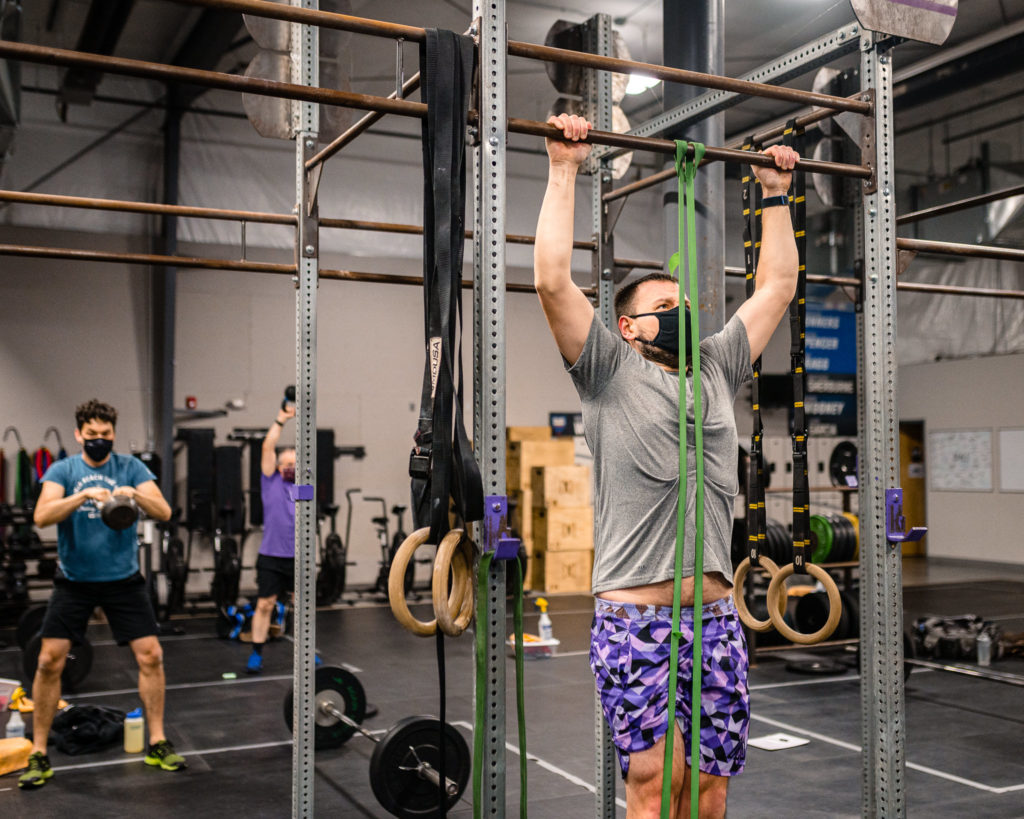
Kipping Pull Ups
Unless you’re in the company of fellow CrossFitters, you can assume that if someone wanted to know how many pull ups you could do they would be referring to strict pull ups. This is an important distinction because CrossFitters tend to forget that we typically default to kipping pull ups when they’re in a workout or written on a whiteboard, which is backwards relative to the rest of the fitness world. One way CrossFitters could probably help their cause is by realizing that we’re sort of the weirdos, so we have a bit of an obligation (if that’s possible) to explain the difference and why kipping has its place in fitness. In order to posit that argument, a surface level understanding of the CrossFit methodology is extremely helpful.
What makes CrossFit unique is its ability to measure fitness mathematically. Using a stopwatch, tape measure, and known weights, we can measure exactly the Power output of an individual athlete over a period of time, defined as Force multiplied by Distance all divided by Time. We also know that physically speaking, Intensity and Power are equivalent, and that empirical evidence suggests that “Intensity is the independent variable most commonly associated with maximizing favorable adaptation to exercise” (Understanding CrossFit, Glassman 2007). Therefore, our goal as CrossFitters is to do the most work (Force x Distance) in the least amount of time (Intensity) possible in order to improve fitness. As a quick example, an athlete who takes 2 minutes to 50 kipping pull ups has a higher power output than an athlete who takes 10 minutes to do 50 strict pull ups. With the same loading and same (or similar) range of motion, a decrease in time equates to an increase in intensity. Again, this is not to suggest that kipping pull ups are superior to strict pull ups for fitness, but are instead saying that kipping pull ups are usually superior to strict pull ups if the goal is power output.
With the long term goal being a steady, continuous improvement in fitness over a lifetime, the ability to mathematically determine one’s fitness is the linchpin for the use of kipping movements because an athlete can do more work, faster, yielding positive adaptation. Kipping enables an athlete to use the same range of motion and similar musculature as a strict pull up, but with the benefit of using the hips to reduce local muscular fatigue, meaning an athlete can do more work in less time.
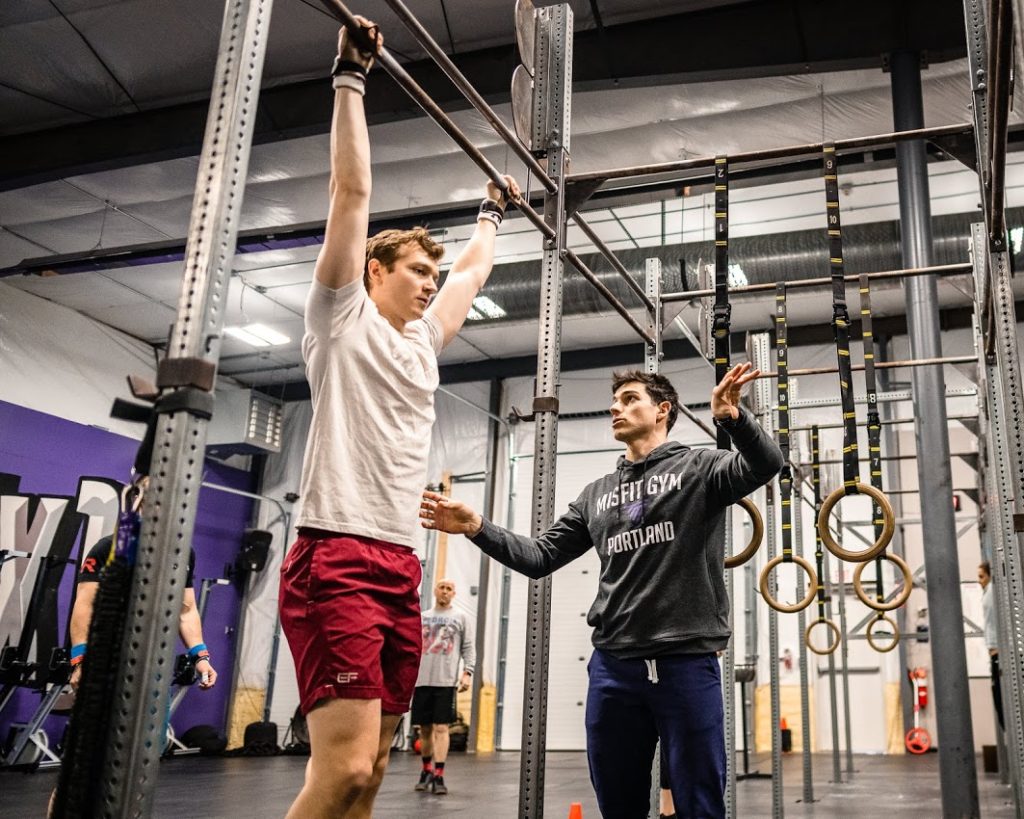
So if you accept what has proven to be an accurate description of fitness for at least as long as CrossFit has been relevant, the validity of kipping is at least enough to continue the discussion. Now we can take a closer look at the nuances of the movement itself, and how to apply it correctly and safely.
Another element that makes CrossFit unique is that many of its movements require neurological adaptation, or practice to improve upon. There is an important skill-based component to efficient kipping movements which cannot be overlooked because ultimately, functionality as a human being is dependent on an individual’s ability to use and move their body as a singular, well-orchestrated unit rather than singular extremities operating independently. Kipping requires timing, coordination, proprioception, and general athleticism to execute correctly and safely, and has tremendous skill transfer to other exercises. If an athlete has the requisite strength and flexibility, we can start them off with very gentle kipping motions and progress them to full fledged kipping movements once they understand some basic principles (we won’t dive into those here).
Perhaps the most common and understandable critique of the kipping pull up (or any kipping movement for that matter) is its safety: is the juice worth the squeeze? (I’ll now remind everyone reading that I am neither a medical professional, nor is this medical advice.) Empirically, I’ve seen thousands of athletes perform kipping movements where the only serious injuries sustained are by those who either repeatedly performed too much volume for their current ability, did not have the requisite strength or mobility to safely kip to begin with, or are high level athletes with injuries as a result of high level performance, not unlike a professional hockey or football player. I cannot say I’ve ever seen someone injure themselves as an obvious and direct result of an individual kipping pull up. I’m not saying that hasn’t happened, but I am saying that I’ve never witnessed it.
Within the CrossFit space, some believe that an athlete must be able to perform a certain number of strict pull ups with their own bodyweight prior to adding the dynamic kipping element, where others have no prerequisites and put the onus on the athlete. Personally, I live somewhere in between: athletes should be able to perform strict pull ups before introducing any meaningful volume of kipping reps, but an athlete can still benefit from the basics of the kip itself and very low doses of kipping pull ups if they are able to do so. This requires a coach to have the experience to identify where an athlete falls on the kipping spectrum, and more importantly the willingness to tell an athlete that they are not allowed to kip for their own safety. All easier said than done, but well worth the uncomfortable conversation since the alternative is potential injury. Allowing athletes to make attempts at movements that are just outside of their current capabilities also provides a coach with an easy avenue to bring up topics like “if you want to get better at kipping pull ups, start working on your strict pull ups!” or maybe more commonly: “if you want to make those pull ups easier, let’s chat about your nutrition and habits outside the gym.”
While there is no black and white line that says “you may or may not perform kipping pull ups”, understanding that introducing a dynamic movement into a system that cannot support static or strict movements is recipe for long term problems is a pretty starting point.
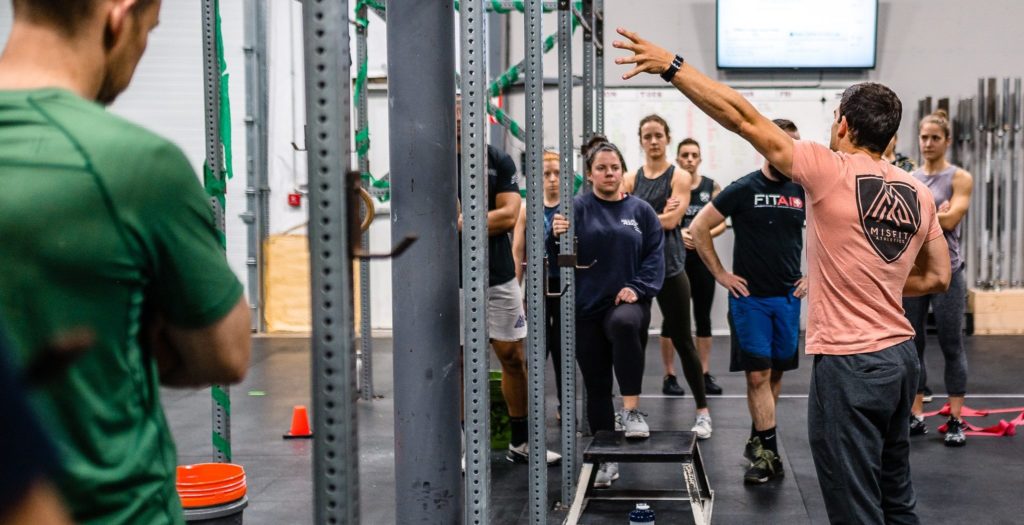
Application and Programming
Now that we have an understanding of the differences between the two types of pull ups and why kipping pull ups are frequently found in CrossFit workouts, we need to understand how to incorporate both versions into a well rounded fitness regimen.
First, why use kipping pull ups? Essentially, kipping provides us with a version of the pull up that can be injected into a workout that’s designed to be more conditioning centered than strength centered. If we want an athlete to move fast, we have to either program a small enough number of strict pull ups at a time that the athlete isn’t stopped dead in their tracks due to muscular failure, or we have to allow the athlete to use their hips to assist the upper body so that they don’t fatigue as quickly. A set of 10-20 kipping pull ups is an incredibly effective way of eliciting muscular fatigue while also creating high metabolic demand (you breathe hard!) – two key components of a well written workout. In a “chest to bar” pull up, where the standard range of motion is that the chest makes contact with the pull up bar below the collarbone, we can create an even larger range of motion and elicit an even deeper and more challenging metabolic demand that would be difficult to reproduce with a strict pull up. The bottom line is that kipping opens up a whole world of upper body gymnastics and movements that can now be used for the purpose of metabolic conditioning, or making an athlete breathe hard rather than purely develop strength. In CrossFit terms, we also accept that an athlete is only as “fit” as the things they can or cannot do, so we want to train the kipping pull up for the same reason we want to train any other movement: it makes us fitter overall. This isn’t to say that strict movements don’t have a place in a conditioning environment because they certainly do, but for the purpose of developing an athlete’s conditioning, kipping is an extremely useful tool that allows us to use movements that would otherwise be relegated to “strength work only”.
From a strength building perspective, strict pull ups have the upper hand. Whether they are band-assisted or not, pulling without momentum and in multiple planes is hard to beat when seeking upper body strength, shoulder health, and general physical capacity. That’s not to say that kipping can’t also help strength, nor does it mean the two have to live independent of each other: imagine doing a set of strict pull ups to failure, but then immediately choosing to kip to help eek out an additional few reps. This is no different than having a spotter assist you with a few additional bench press reps in order to overreach your current capability, so unless you’re competing in an event where the rules specifically disallow kipping and you’re just looking to get in better shape, why not kip? Strict pull ups should be the place a coach starts with a new athlete and should continue to be a staple in their training regime, even if the athlete can perform them well and kip safely.
Without a definitive winner, the debate between the superior pull up style may never truly be settled, so the best position to be in is one of knowledge and practical application. If you’re in the market for developing pulling strength, start with strict pull ups. If you’re looking for a way to incorporate a bodyweight pulling movement into your conditioning work, the numerous reasons outlined above should give you the green light assuming any potential risks are mitigated based on the aforementioned guidance. The next time you come across the comments section of a kipping pull up video, feel free to direct any lost souls right here.
Coaching Resources
Are you a coach or athlete looking to incorporate kipping pull ups into your or your athletes programs? We’ve got a teaching progression dedicated to just that: Teaching the Kipping Pull Up
How about the more advanced Butterfly Pull Up? Yup, we’ve got that too: Teaching the Butterfly Pull Up
Written by Hunter Wood

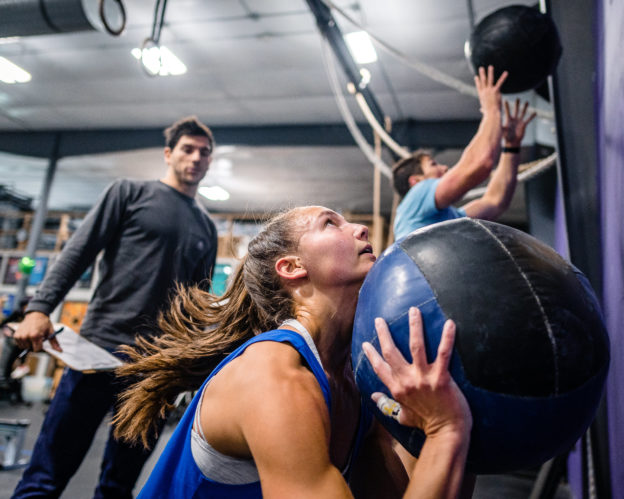
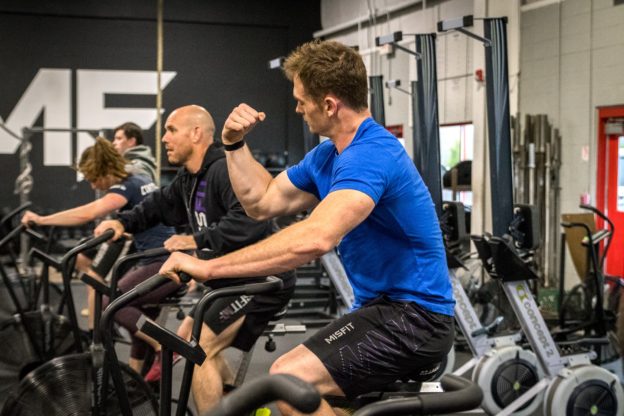
Responses